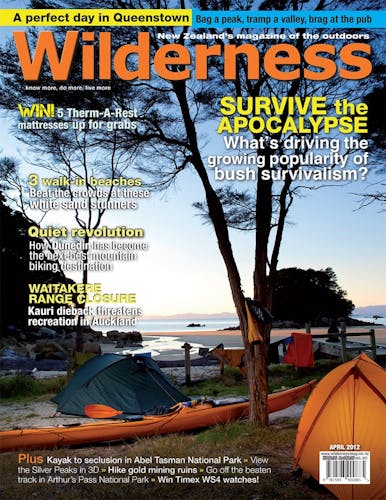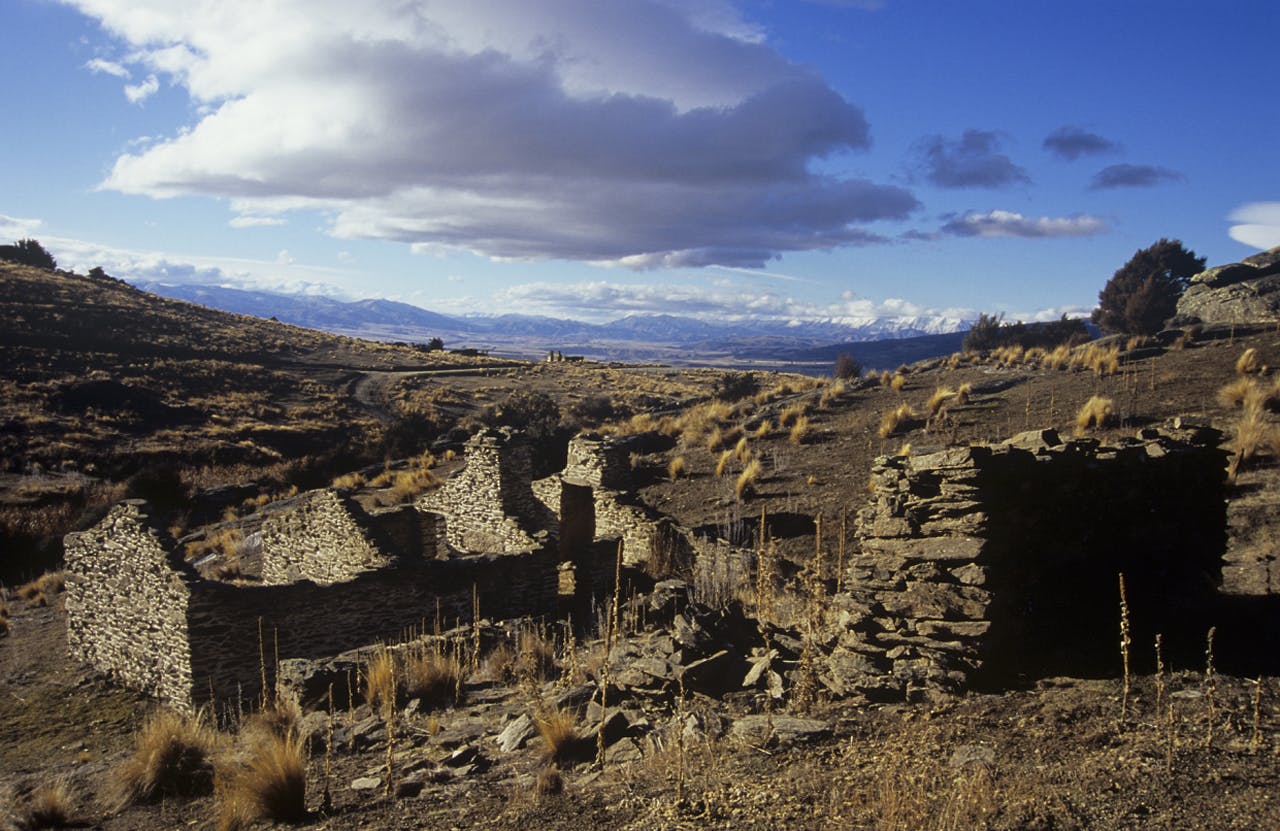Three places to explore New Zealand’s gold mining history
If you want any proof that the mining industry is not very good at cleaning up after itself, just look at the number of relics left from past mining operations
Scattered around the public conservation estate are dozens of old gold mining sites. Several of our best-known tracks follow gold mining routes: notably the Wangapeka, Wakamarina and Harpers Pass tracks. DOC staff and other archaeologists have, in places, carefully restored several old sites, notably at Wairongomai in Kaimai-Mamuku Forest Park, Big River and Kirwins Reward in Victoria Forest Park, Karangahake Gorge near Paeroa, and 21 sites in the Queenstown-Wanaka area, collectively known as the Otago Goldfields Park.
These serve as reminders of the past when prospectors extensively explored the backcountry, when canvas towns sprang up overnight, speculative companies gambled investor’s hard-earned funds and, occasionally, men struck it rich. In Stevan Eldred-Grigg’s rollicking good history of gold mining in New Zealand, Diggers, Hatters and Whores, you’ll learn all you need to know about this colourful period of New Zealand history.
Of course, given enough time, old machinery gathers rust and moss, vegetation hides the worst excavations and stories grow in the retelling, too. Then, old mines become a romantic aspect of the past. Here’s my pick of the country’s best historic sites.
Karangahake Gorge Historic Walkway, Paeroa
During the heady gold rush days, Karangahake was awash with people, machinery and gold. Several stamper batteries pounded quartz ore to enable gold extraction. And extracted it was, in staggering quantities: during its peak in 1909, Karangahake quartzfields boasted 60 per cent of New Zealand’s gold output. Recent efforts by DOC archaeologists to restore mining relics have made this one of the country’s best historical tracks, which sidles through a gorge on the Ohinemuri River, opposite SH2 between Waikino and Karangahake. Part of it follows an historic railway line, with both a tunnel and century-old trestle bridge adding interest.
Murray Creek Goldfields Track, West Coast
The relic-littered Murray Creek Goldfields Track offers perhaps the best introduction to West Coast gold mining history. The Murray brothers discovered gold in the area during the mid 1860s and mining continued until the 1920s, although it peaked for only a brief period. A convenient loop track begins and ends at Black’s Point (just east of Reefton) and passes in order, the sites of the Cement Town, Chandlers Open Cast Mine, Murray Creek Gold Mine, Inglewood Mine and Ajax Battery. Perhaps the best relics are found at the Inglewood Mine.
Bendigo Historic Reserve, Dunstan Range, Otago
For a complete contrast to mossy, damp West Coast goldfields, try the dry and barren landscapes of central Otago. The ghostly ruins of Logantown and Welshtown, located north of Cromwell, boast stone hut ruins set between spindly tussock and prickly briar. A stroll along the Matilda Battery Track from Logantown to Welshtown takes 45-60min.
The Matilda Battery once boasted 20 stampers, making it one of the largest to operate in New Zealand. Stone walls, hut remains and a chimney feature prominently in what was an industrious place between 1878 and 1884. Several deep shafts in the area are blocked off with iron grates, but beware of many others which are unmarked and unfenced.
From the Matilda Battery site two routes lead to Welshtown, which is situated on a ridge a short climb ahead. The stone hut remains here must be among the best preserved in Otago and remain steadfast against the winds. You can almost hear the miners teeth chattering.








